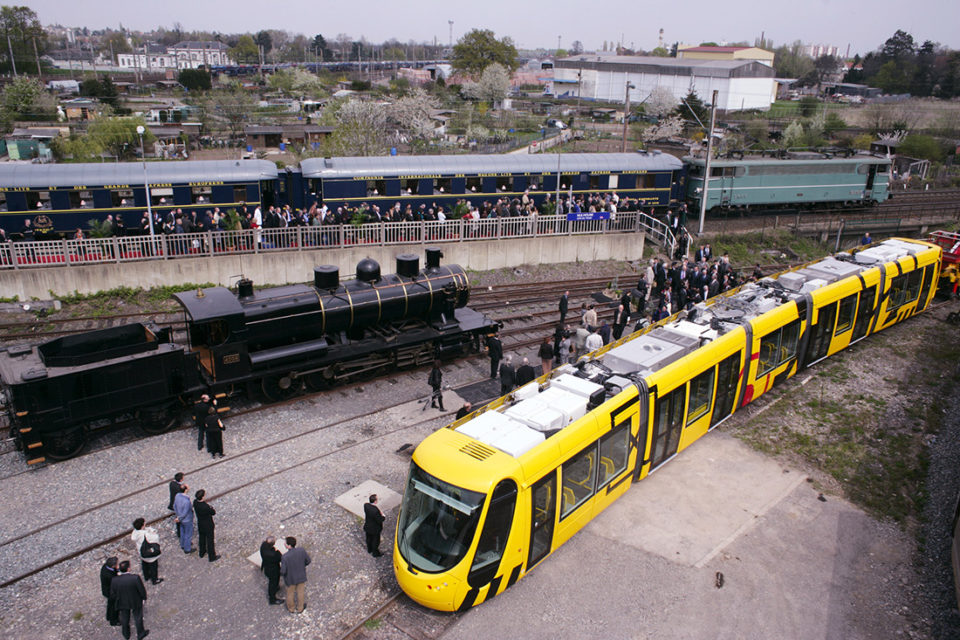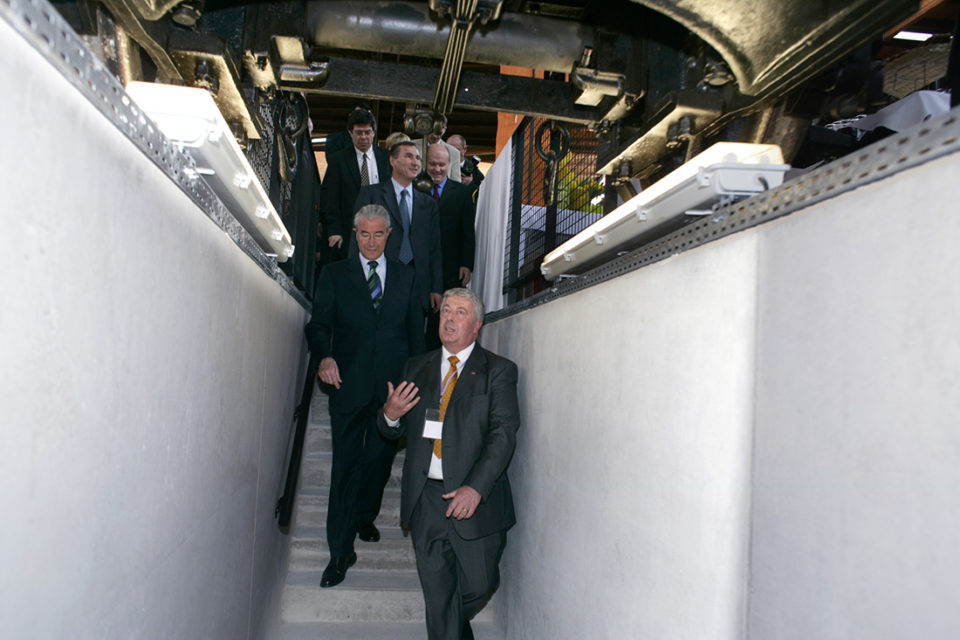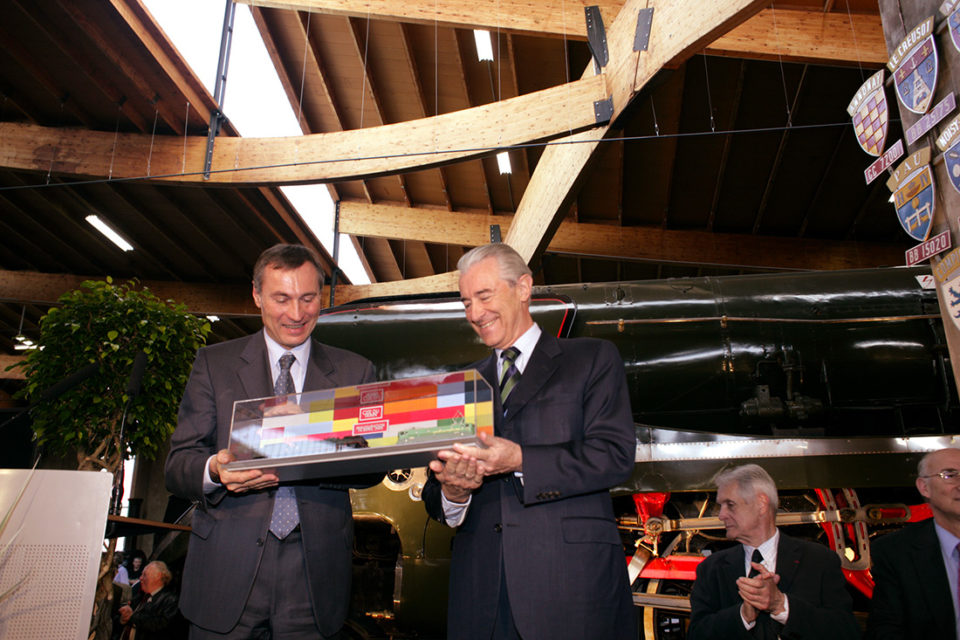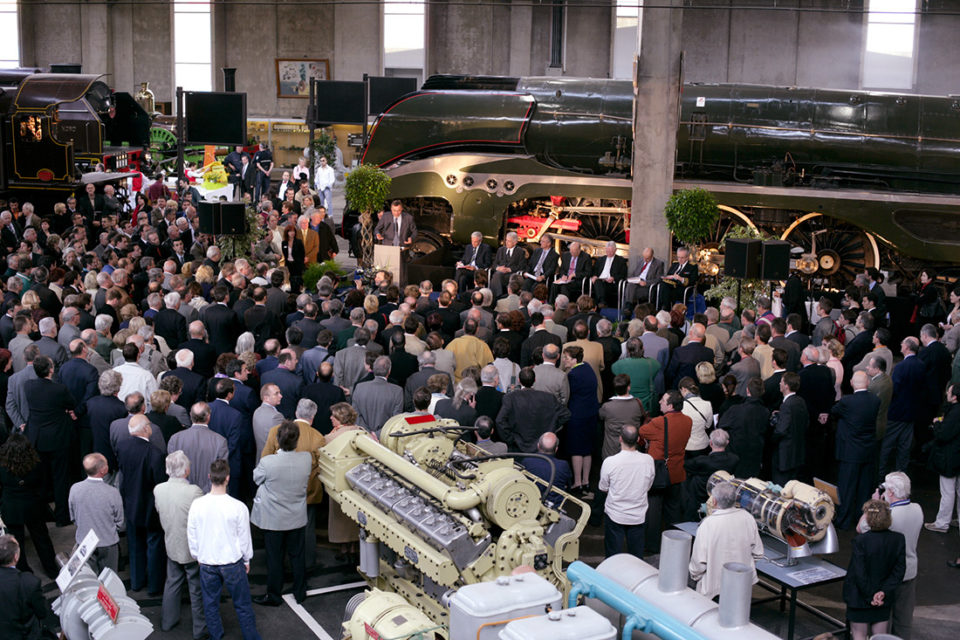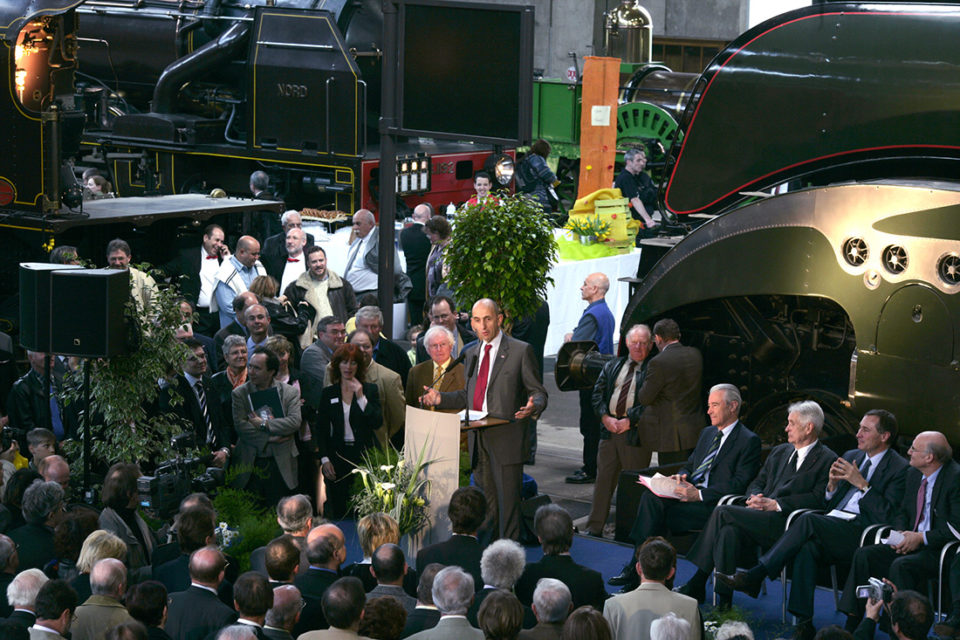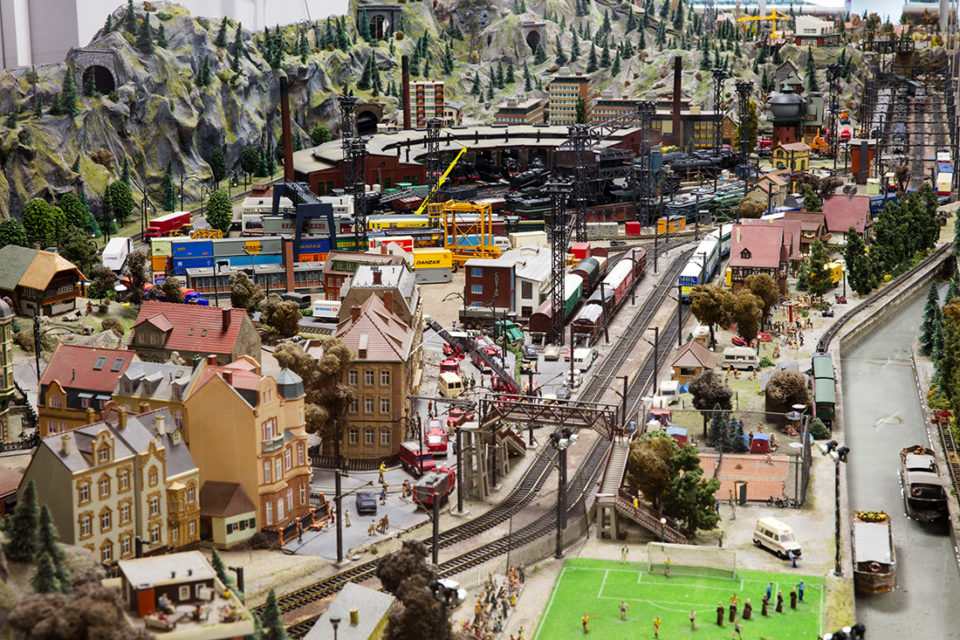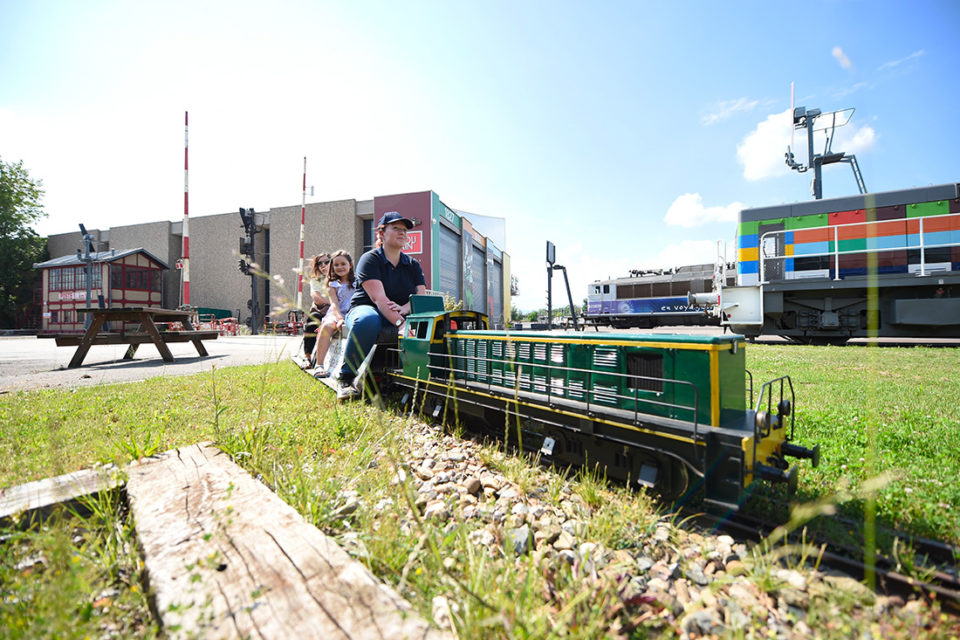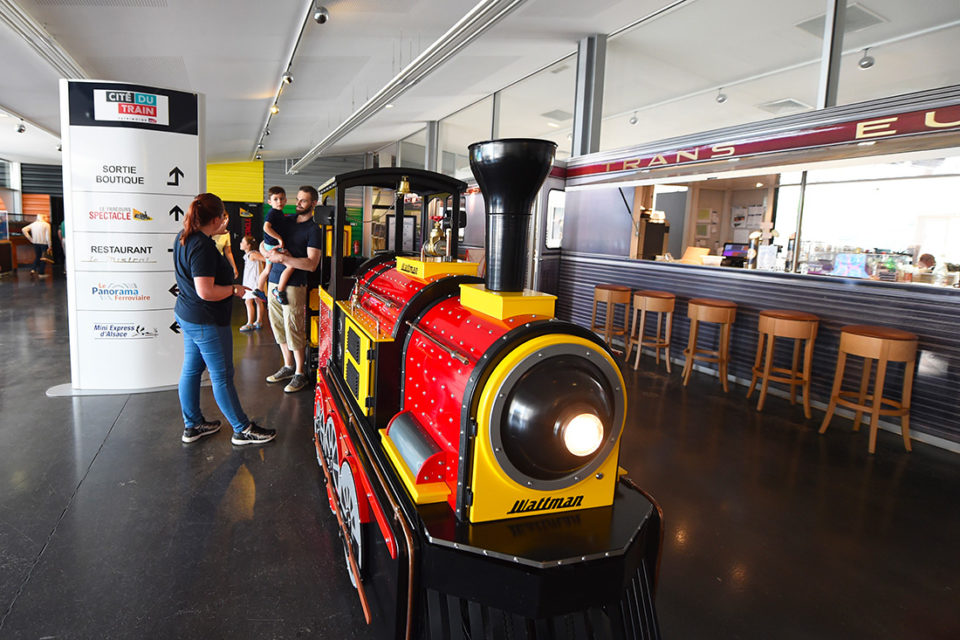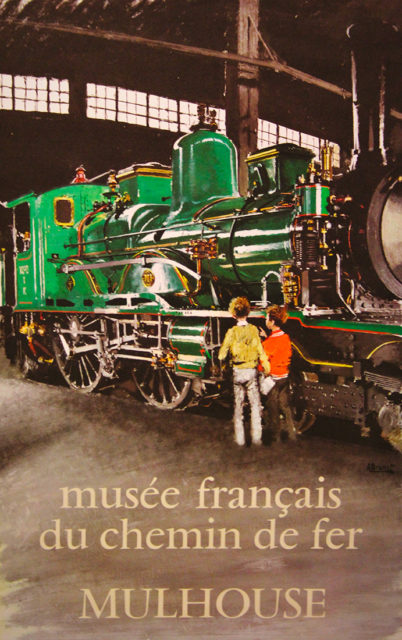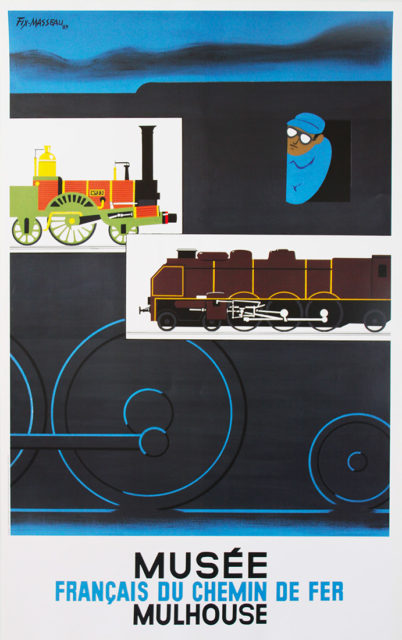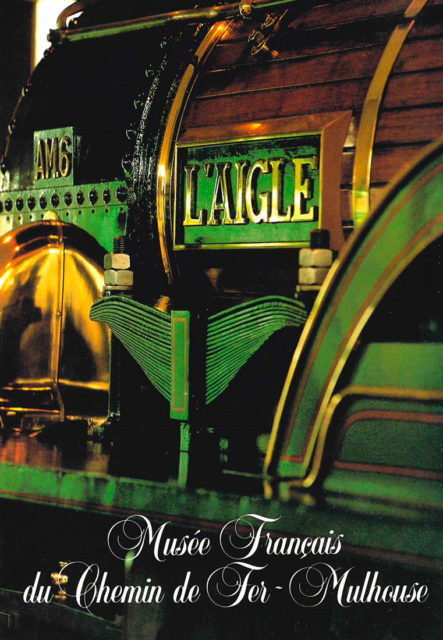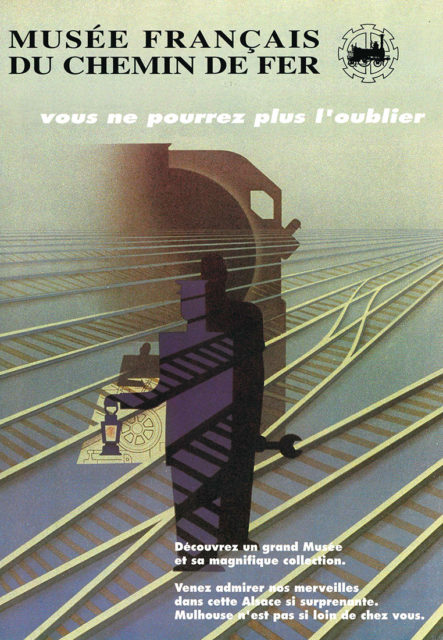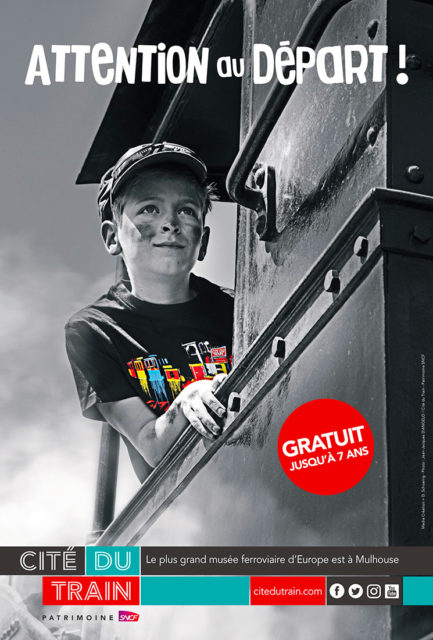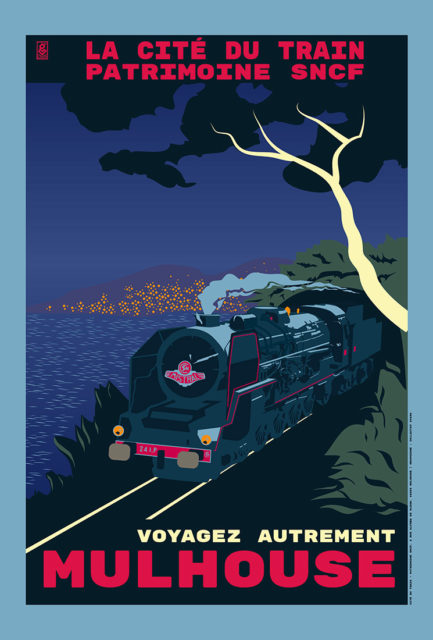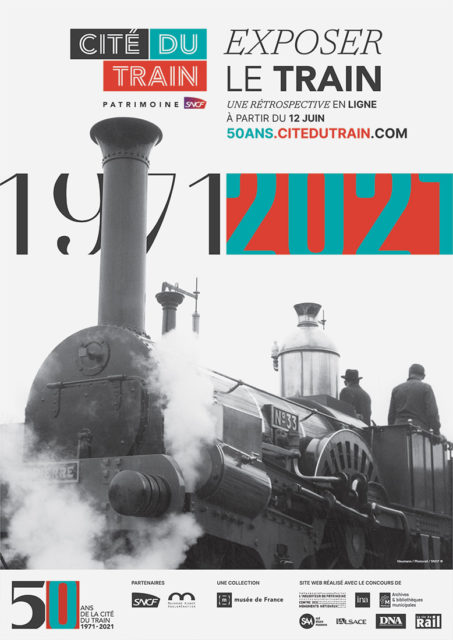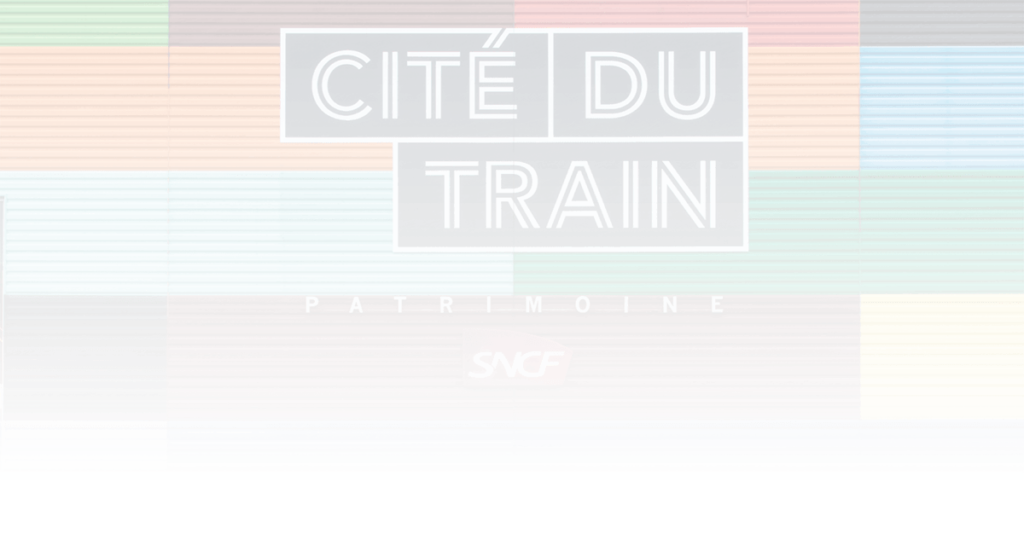
La Cité du Train
SNCF heritage
More than thirty years after the French Railways Museum was opened, the establishment in Mulhouse began a new chapter in its history. That was reflected in its new name, Cité du Train. With the inauguration of the theatrical space of the Show Tour, the collections were presented in a new light.
The redesigning of the tour path in the original building from 1976 (Les Quais de l’Histoire), followed a few years later by that of the outside (Le Panorama Ferroviaire) did not however modify the initial philosophy of the institution in any way: that of showcasing the heritage of railways for as many people as possible.
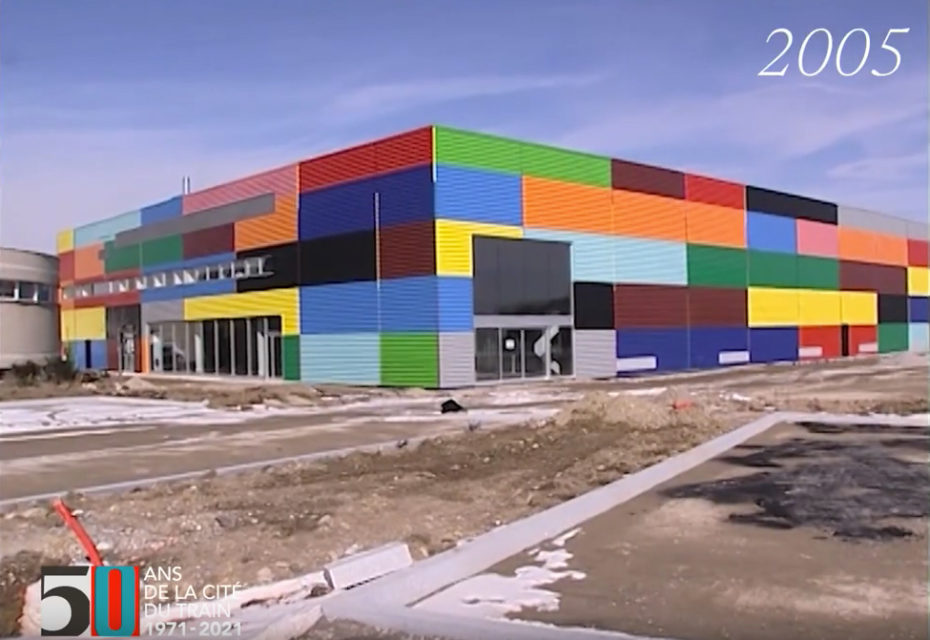
In early March 2005, a few days before the official inauguration, a television team from France 3 Alsace were given a preview of the Show Tour. In this large cinema hall, 27 selected items of rolling stock were waiting for their first visitors.
The arrangement, which was the result of many years of work, was presented by Jean-Marc Combe, former curator of the museum, as a space that combined knowledge and enjoyment. It was a bold gamble for this collection like no other.
That is the area of the Show Tour inaugurated in March 2005.
A new stage in the history of the French Railways Museum began on 11 March 2005. By becoming the Cité du Train, the establishment made its entry into the 21st century. The latest 6000 square-metre building, named the Show Tour, gave visitors a new view of the collection. From the outside, this bright shed painted in colours that draw on the liveries of the rolling stock, attracts the eye. Inside, the themed approach applied by the Atelier François Seigneur and Sylvie de la Dure takes visitors further into major themes such as war, railwaymen’s trades, travelling, official trains, mountains and holidays. The setting plays on light and sound to thrill the senses and offer a novel experience.
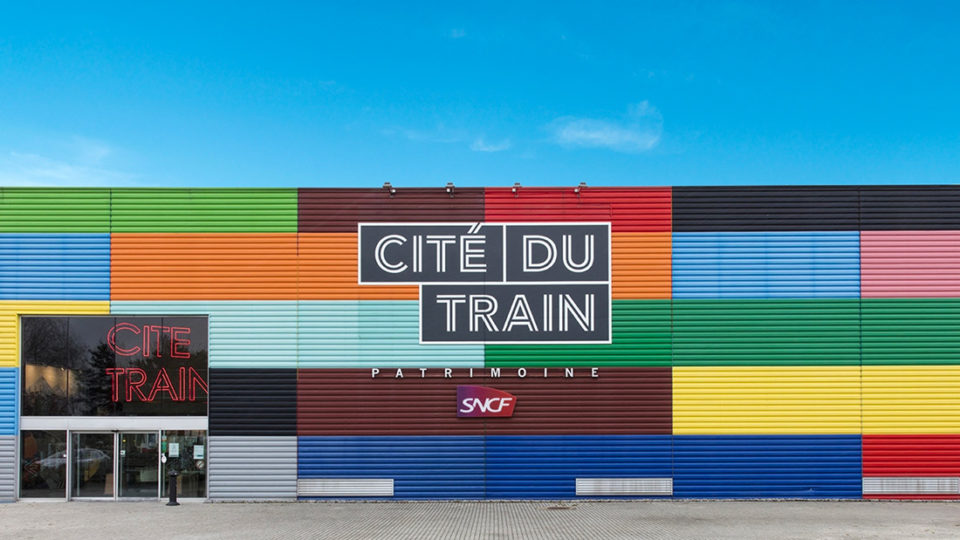

The history
of a rebirth
One month after its public opening, the Cité du Train welcomed its inauguration guests with pomp and ceremony.
From the mezzanine, you could see a crowd pressing around the podium set up behind the 232 U 1 on that day in April 2005. The work, which was described in the press release as the “history of a rebirth”, was exceptionally supported by the DRAC Alsace, the regional council, the departmental council of the Haut-Rhin and the city of Mulhouse. Initiated by SNCF and the museum, the project had a total budget of €8.6 million, and measured up to the collections. For the stakeholders of that Titanesque enterprise, the aim was to demonstrate the status of the museum as a major player in the culture of the railways and of Alsace.
A BB in the
Grand Palais
On its 70th anniversary, SNCF took over the Grand Palais in Paris. The L’Art entre en gare exhibition offered a review of the history of the company, at the same time exploring the role played by trains in the arts. Placed on two immaculately white pedestals, the 150 P 13 and the BB 9004 that set the speed record in 1955 stood alongside an orange TGV and the new railcar of the Paris region. The colour combination between the green livery of the BB and the structure of the nave of the building was striking. That monumental vision was certainly very close to the one seen in the 19th century by visitors to the early industry exhibitions.
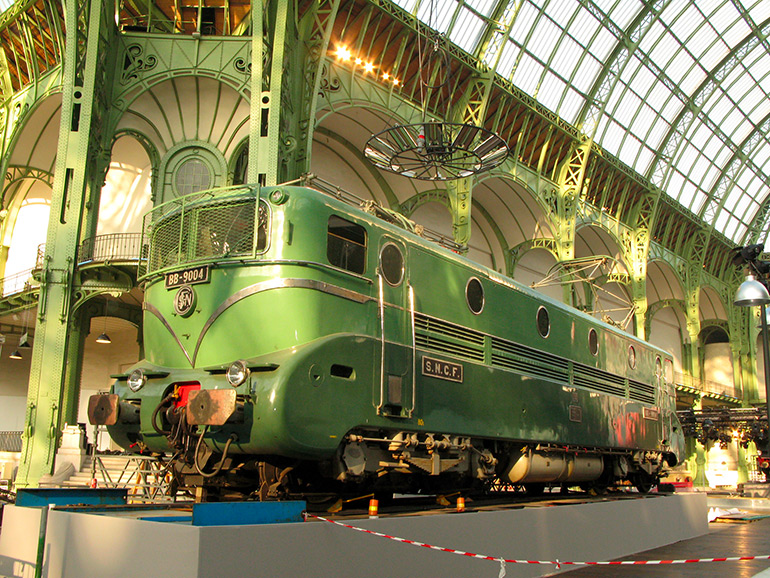
2007, an important
year for the railway
Do you remember where you were on 3 April 2007 at about 1 pm?
You might remember the moment, that of a new episode in the history of transport. That was the day when the Marne, the V150 train, set the speed record of 574.8 km. Seeing that rocket on rails pass under a bridge on which he was standing, a journalist from France 2 shouted “it was extraordinary” on live television. The excitement and emotion were indeed very high. The V150, which represented a new stage in the high-speed adventure of France, became iconic at once. Its 4402 traction unit and one of its coaches were exhibited in the Cité du Train from 26 May to 3 June 2007. A few days earlier, on 8 May 2007, the museum had already paid tribute to the record by imagining, on the Eastern high-speed line, a historic meeting between a POS TGV train and the Crampton engine, the fastest in its time. On 10 June 2007, the TGV Est entered Mulhouse station. In 2011, it was the turn of the TGV Rhine-Rhone.
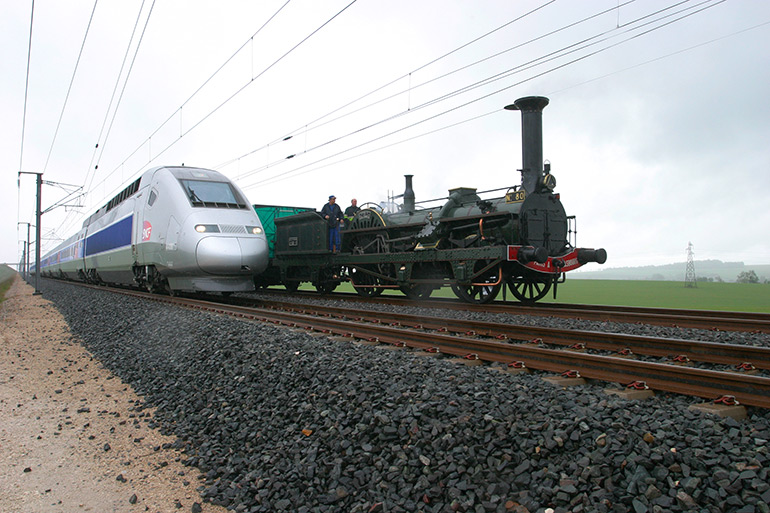
2010, a tram-train
right up to the museum
Do you know what a tram train is?
This blue and grey train, inaugurated in December 2010, is familiar to the local people as it connects the central railway station in Mulhouse with the town of Thann. The tram train offers local transport and is connected to the national railway network; it is operated by Soléa and SNCF. The Museum stop, which is convenient for visitors to the Cité du Train and Electropolis, reminds one of the ambitions of the creators of the museum: that of having public transport right up to the ticket office building. As pointed out by local elected officials and SNCF executives, it was a major step for public service. A little over 170 years after the Mulhouse-Thann line of Nicolas Koechlin, transport in Mulhouse is going strong.
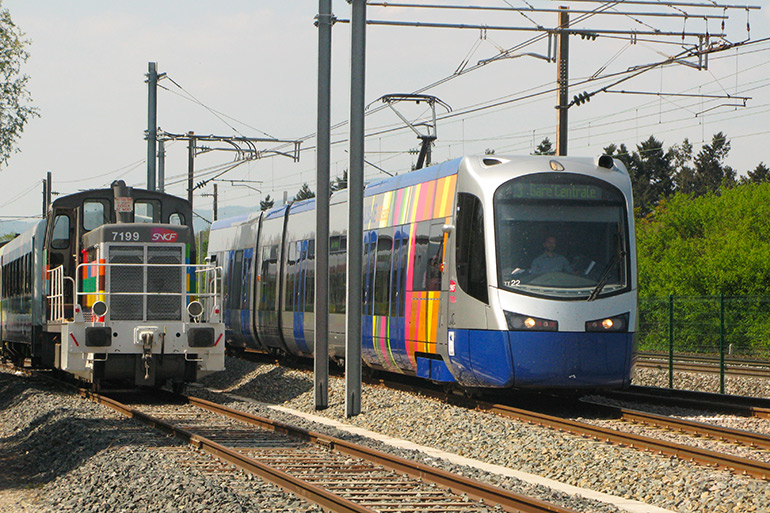
The Quais de l’Histoire
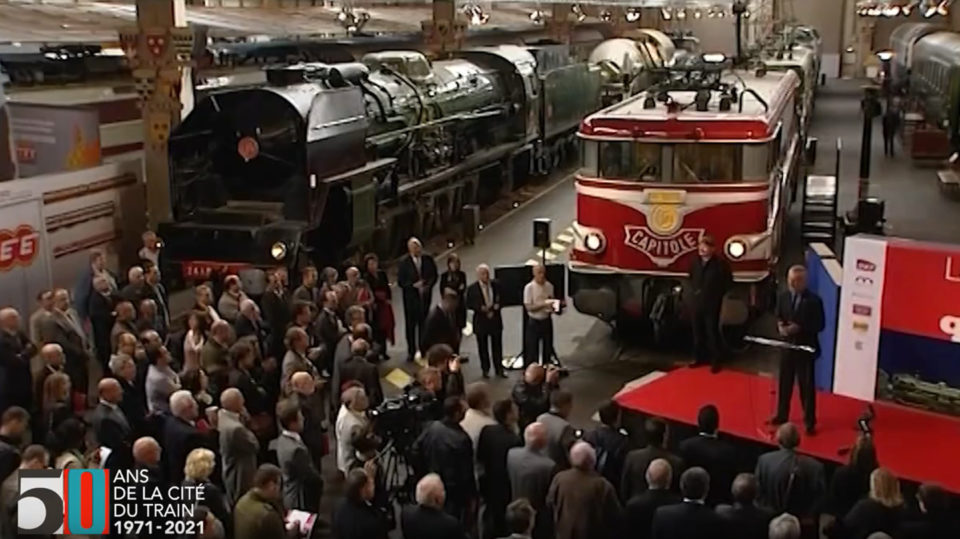
Six years after the Show Tour, the initial part of the building dating from 1976 was redesigned. The seemingly simple goal was to rearrange the exhibits by chronological order. But when one looks at the constraints imposed by trains, one understands that the task is not easy. As pointed out by Philippe Mirville, former President of the Museum, in an article published on 29 January 2009 in the newspaper L’Alsace, the presentation only satisfied 5% of its visitors, most often railway specialists. For their part, the general public need references to find their way through a collection that is not so easy to understand at once. The picture rails added along the tracks created a true path, with a beginning and an end.
In 2011, after four years of work and uncountable manoeuvres, the Quais de l’Histoire were finally inaugurated. Most of the incandescent lamps were replaced by LEDs, which consume less electricity, and help highlight the machines on display. Access ramps for persons with reduced mobility were also installed. The building became more educational and more accessible, yet held on to its identity. If they look up, visitors can still admire the iconic structure of this architectural complex designed by Pierre-Yves Schoen.
The Panorama Ferroviaire
Mulhouse-Utrecht:
a locomotive on the road
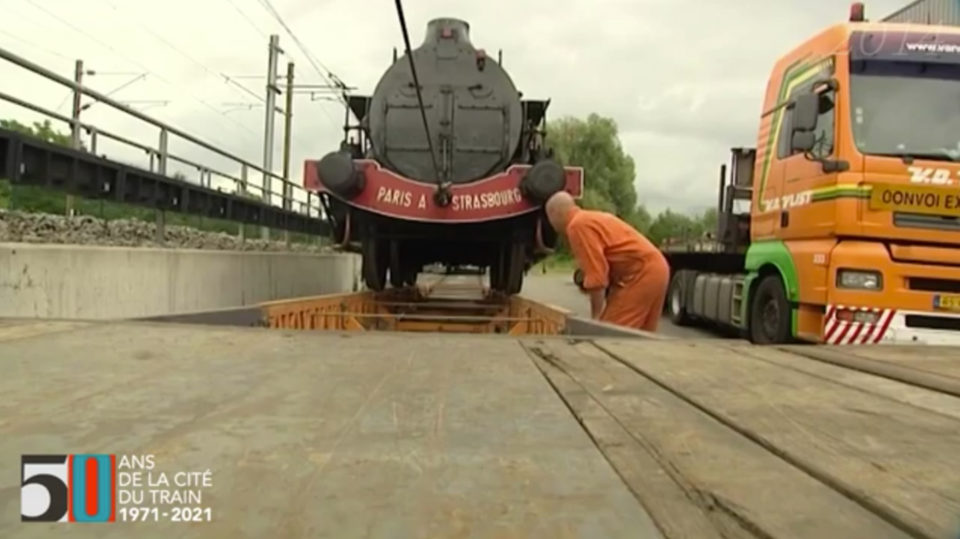
On occasion, some of the trains leave their comfortable home in Mulhouse, always an impressive event. That was so in 2014 of the Crampton locomotive, when it began its journey to the railways museum in Utrecht, to the south of Amsterdam, 700 km away from Mulhouse.
France 3 Alsace was of course there to witness the event, offering an opportunity to go behind the scenes in the video opposite.
The TGV enters
the museum
The 23121 traction unit, which was delivered to the Cité du Train on the night of 8 April 2016, is one of the latest items to be included in the collection. Derived from train 60 and initially bearing the number 23119, this piece of equipment was commissioned in 1982 and taken out of service in 2012. It was then selected to join the museum in Mulhouse and thus become a heritage object. It was restored in the technical centre in Bischheim, close to Strasbourg. Repainted in its original livery and renamed 61, part of the body of the traction unit was removed and replaced by a transparent wall, which reveals its triangular structure and the inner equipment. A 1981 film devoted to the first two TGV Sud-Est trains 01 and 02 (“Patrick” and “Sophie”) by the audiovisual centre of SNCF, claimed: “sometimes, engineering joins the magical dreams of childhood. ”
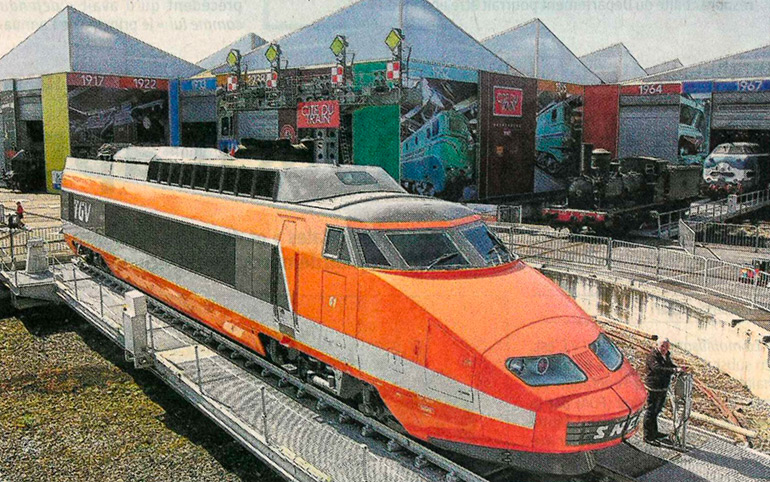
A shared
anniversary
Like the Cité du Train, the Thur Doller train celebrated its jubilee in 2021. Bringing together a group of passionate volunteers, the organisation, which is based not far from the museum in Cernay, has 12 km of tracks. Offering rides on steam trains and steam train courses, the organisation is part of the railways organisations authorised to restore rolling stock. Its latest project to date was the complete restoration of locomotive 141 C 100, with the support of DRAC Eastern France, and the use of a crowd fund via the French Heritage Foundation. This tourist railway has been a historical partner of the Cité du Train. Its combined ticket allows visitors to go further in their discovery of the railways heritage, in motion and in an enjoyable way.
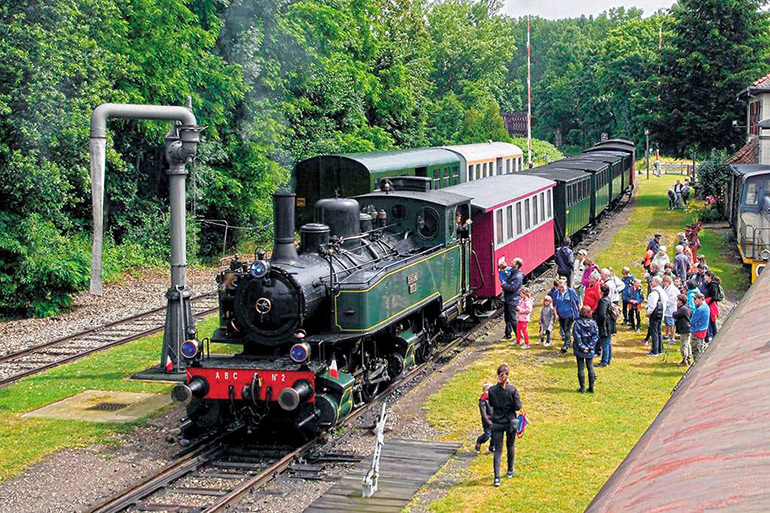
Volunteers
at the Cité du Train
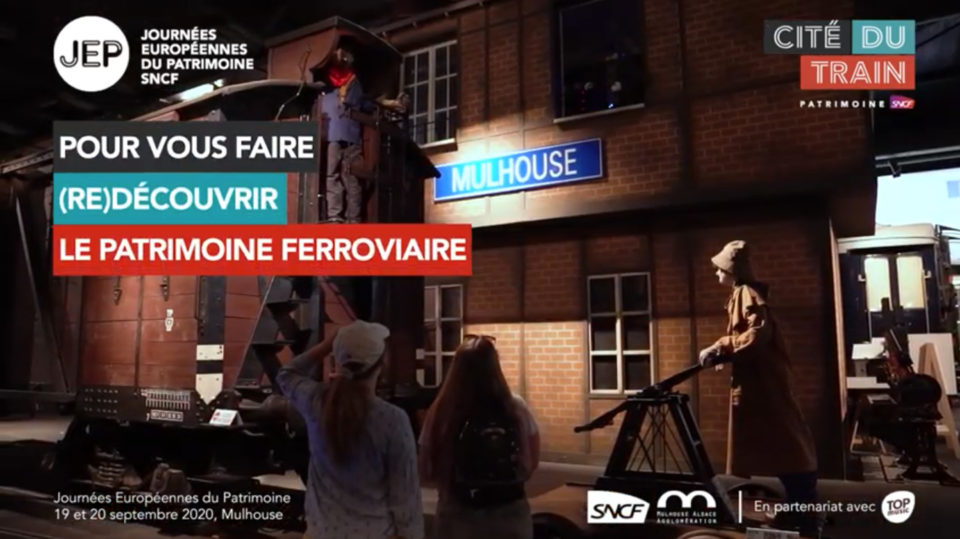
The volunteer group is made up of fifty individuals who have played an important part in the recent history of the Cité du Train. Railway employees or former railway employees, they make an almost daily contribution to the life of the museum. Their input, which is very much appreciated by visitors, reinforces the dynamic cultural policy defended by the institution. Moving about exhibits, painting items in the Equipment collection, driving the Mini Express, providing explanations about TGV driving, offering maiden trips in track motor cars and participating in collection projects are some of the actions in which this group is involved.
One of the most remarkable is the development of Y Experience days when small groups can discover train driving at the controls of a shunting locomotive. And in the past seven years, the restoration and operation of the Sambaldur-sur-Mou roundabout that came straight from Perpignan. This relic of the history of fairs was in operation from 1948 to 2007 and was purchased in 2014 by the museum and reassembled in the Panorama Ferroviaire. With its recognisable pastel colours and the sound of its Ford T engine, this roundabout had “brought much enjoyment to the young and older tourists of Canet-en-Rousillon and Argelès-sur-Mer”, according to its donor, Chantal Bey, grand-daughter of its creator Zilda Clément. Today, it continues to delight visitors to the Cité du Train.
Marc Seguin
in the museum
The replica of the Marc Seguin locomotive of 1829 was exhibited during the summer of 2017, a sign of the passion that drives the world of railways. This exceptional piece of equipment required years of painstaking work led by Gaston Monier and his organisation. The locomotive was built on the basis of original drawings, and has the particularity of moving. It is fully functional and enables visitors to measure the technological progress made from the early years of steam to the TGV.
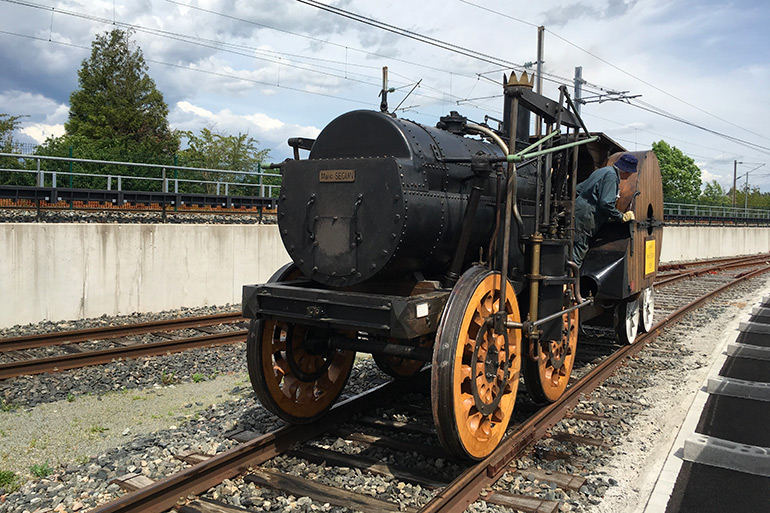
One event may
hide another
The model room is the high point of the tour, and leaves no visitor indifferent. This 1:87 model was built by André Ullrich in the late 1970s and was first displayed in the entrance hall of the Crédit Mutuel Sainte-Marie, where that models aficionado was employed. The room in the Cité du Train which is now devoted to it became its permanent home in 2002.
While trains are important, everybody is delighted by the details of this world in itself, halfway between reality and imagination. With a bustling fair, a pumpkin patch, a mysterious castle and a football pitch where miniature players bump into a group of monks, this creation is technical, yet tells stories. Outside the Quais de l’Histoire, the Mini Express of Alsace, imagined in 2014, continues to go round. If it is raining, the little rubber-tyred train, a favourite character of the museum, is always ready for you.
A shared
history
Even though space is unfortunately not unlimited, the museum continues to acquire new items to display. The latest of these was the Mauzin 214 track geometry car, which came in June 2019. But recent years were particularly devoted to restoration. The Langres rack railway, affectionately known as the “Crem’Zouille” had been restored a few years earlier in 2016, and was already in the Quais de l’Histoire. Then came the turn of the USI and UIC coaches displayed in the Panorama Ferroviaire after restoration by the SNCF Workshop of Périgueux. In September 2019, the European Heritage Days marked the return of the Decauville railcar (1945) after it was restored by the Quatre-Mares workshop in Sotteville-lès-Rouen, as was its forerunner the Buddicom a little before the French Railways Museum was founded. In 2021, the active participation of SNCF employees in the exhibition devoted to high-speed trains once again demonstrated that the love for the museum and its exhibits is going to last.
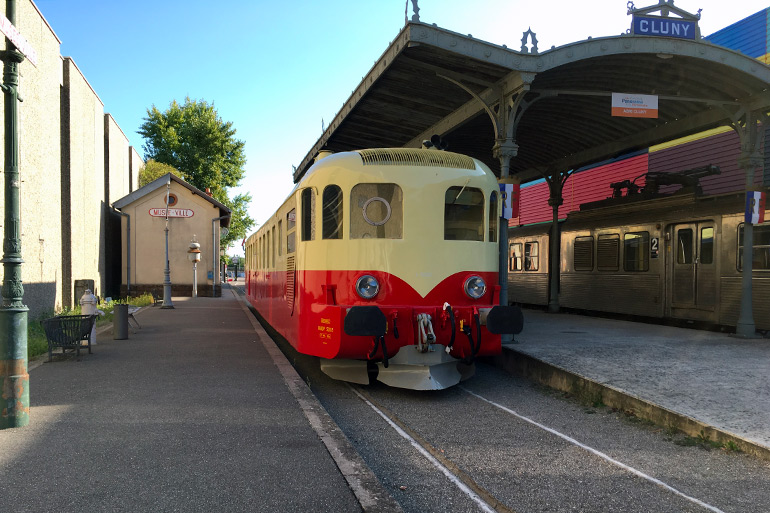
En voiture
Simone!
What if you had a chance to travel through time on exceptional trains? That was the wager taken on in 2018 by the Cité du Train and Versatile, a company based a few kilometres away from the museum in Hochstatt. A dive into the great railways epic that is made possibly by a number of colourful characters. For the first time in its history, the museum opened the doors of its most prestigious trains to great delight of visitors. “It was so frustrating to not be allowed to climb on. At the same time, these are historic coaches that would not withstand the traffic of many thousand visitors. By organising visits with small groups of a dozen people, we could create a small cocoon. But we had to go further than existing guided tours. So we brought in some characters.” say Claudine Lengert and Julien Prodorutti, who were behind the project. Funny, sincere, unusual and above all exciting theatrical visits that you can find every year, from April to August. J.P.
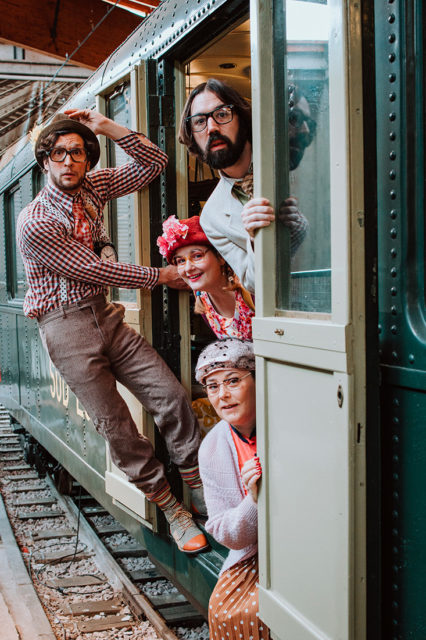
The Train of
innovation
2018 was a major date in the history of the SNCF. For its 80th anniversary celebrations, the company emphasised the wealth of its human and engineering heritage. On that occasion, the Train of Innovation started off on a travelling show to 12 locations across France. Inside, a futuristic setting retraced the eight decades of the SNCF, with a focus on the themes of memory and innovation. Some models, usually kept in the museum, went along with the selected works to meet the people of France. Ending its tour at the Cité du Train, the Train of Innovation was a huge success. From railways museum to museum railway!
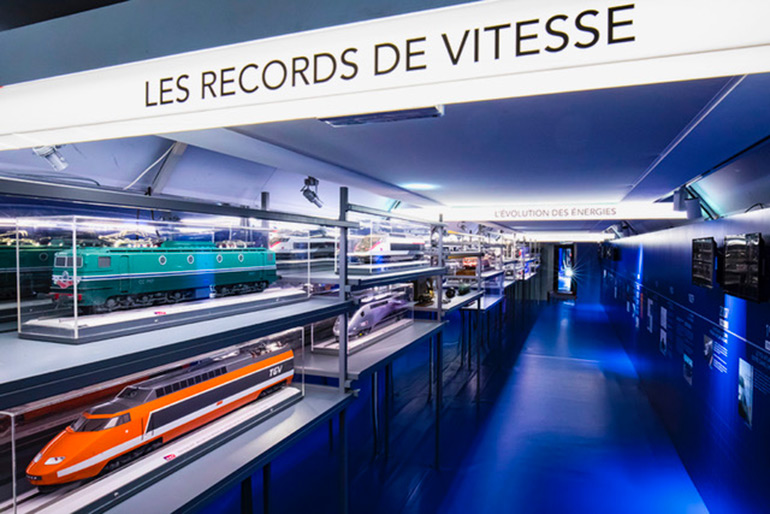
Setting the stage
for high-speed trains
2021. The TGV turned 40. This was a major event for SNCF, and generally for the world of transport. Designed by the stage and museum design firms La Fabrique Créative and Azimuse, the rearrangement of the last track of the visit of the Cité du Train pays homage to that chapter of the history of railways. Displaying the RTG and the 61 traction unit, the new space devoted to high-speed trains addresses the technical, geographical, social and decoration issues of such transport. This redesigned museum space, which was produced behind the scenes in 2020-2021, is a concentrate of know-how. Archivists, stage designers, graphics designers, photographers, track layers and drivers all brought together their skills to give concrete form to the predictions of André Ségalat, who had said this at the opening of the museum in 1971: “I would like to tell the founders of the French Railways Museum to leave room for expansion: the railways are only just starting out on their journey! ”
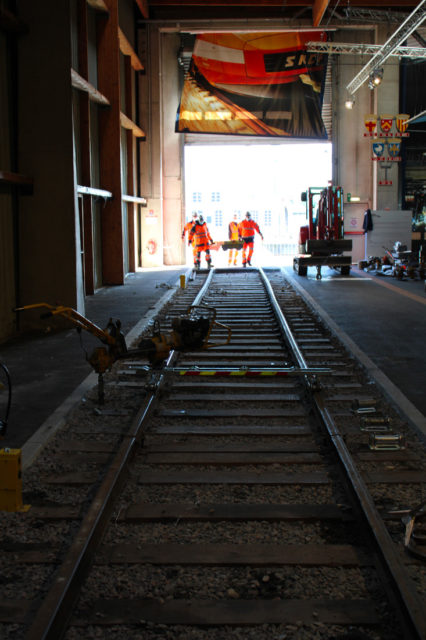
50 years
in posters
What better way to end this retrospective than to take a look at the drawings collected by the museum?
There are 50 years of promotional posters. From the gouache by Albert Brenet to the screen prints of the Mulhouse group 2920g, each period has its own style and vision of the collections. Trains appear as geometrical shapes or sketches, but always an inexhaustible source of inspiration. The 50 years poster, created by the firms Landor & Fitch and Vuxe, shows the Buddicom, the oldest locomotive in the museum and generally in Europe. The figure of Michel Doerr, the founder of the museum can be recognised easily. Looking in the distance or in the future, he possibly might not have thought that five decades later, the museum would celebrate its heritage and railways adventure, which was only beginning.
Our children
and grandchildren…
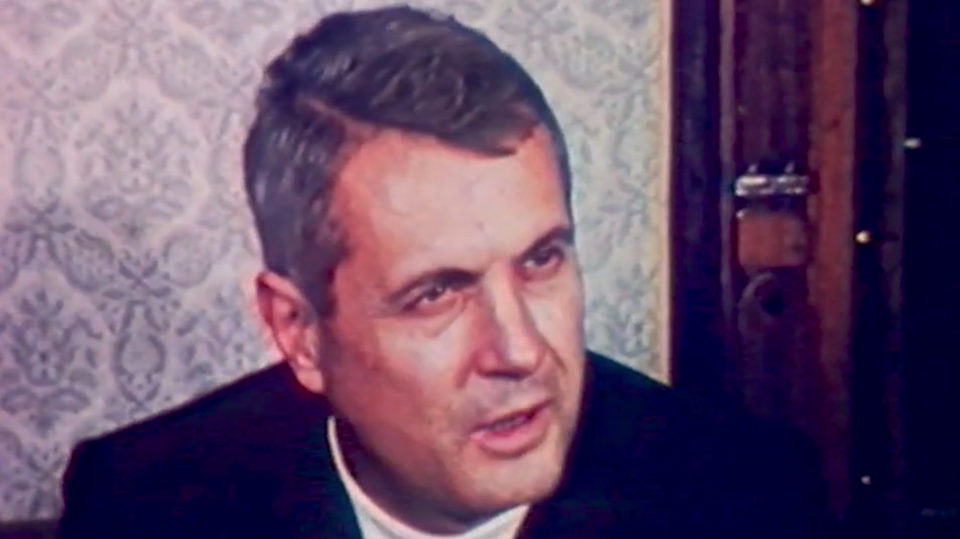
“I am sure that our children and grandchildren will continue to add new pieces. Some of these are in use in our systems, others are still on the drawing board, but they will come some day to the Railways Museum.” This statement by Jean-Mathis Horrenberger, taken from the television programme Expression of 29 December 1982, has lost none of its relevance. While the museum celebrates its 50th anniversary in 2021, the year is also that of 40 years of high-speed trains in France.
The display of the orange TGV in the new museum space is thus a symbol. But as Michel Doerr said in the second part of the video, railways are more than machines. He believed that “when one is steeped in humanism, the human element that is represented by the tradition of the railwayman’s trade [is very much part of the story]”. The French Railways Museum already has a past, a present and undoubtedly a future, bearing a whole section of the individual and collective memory of the railways.
